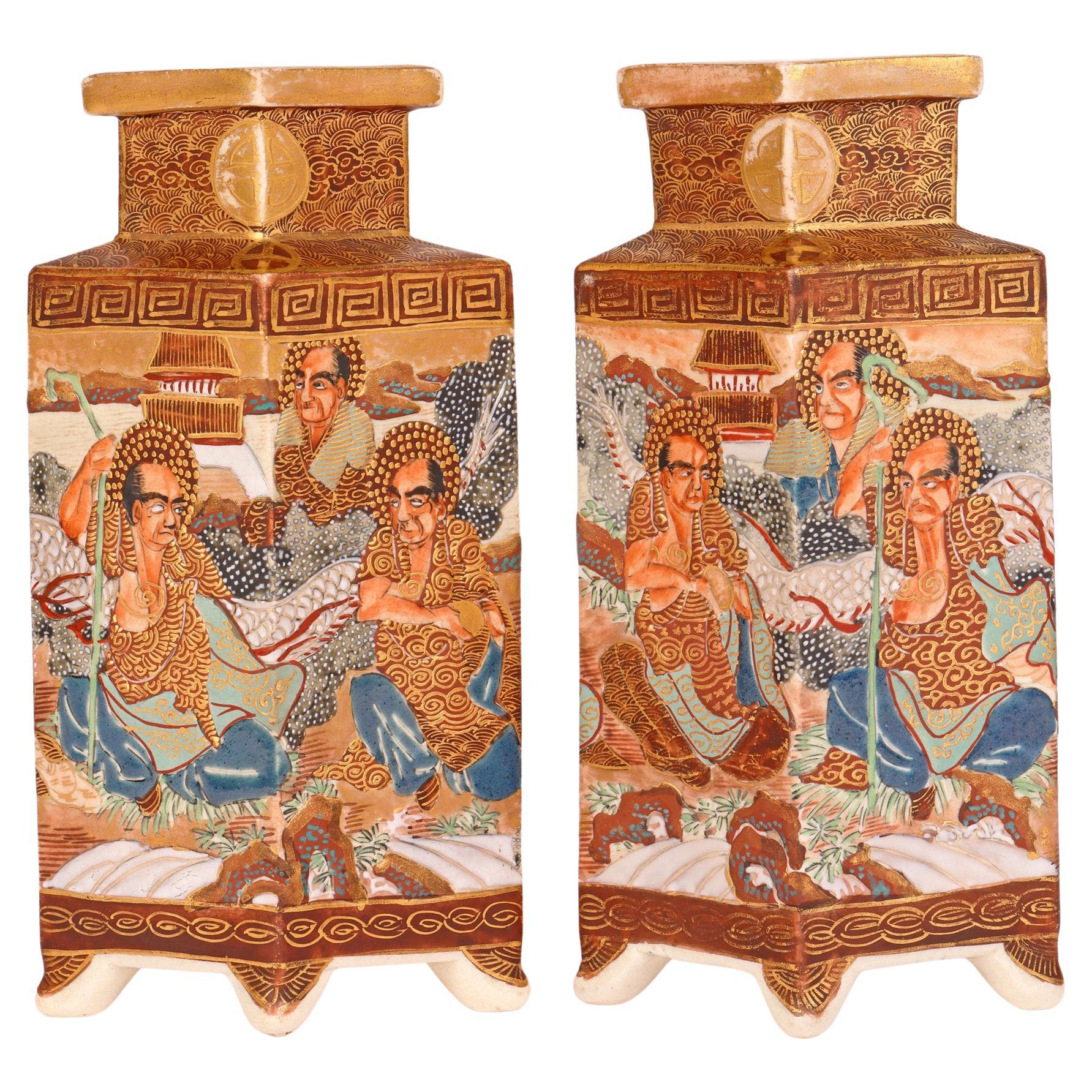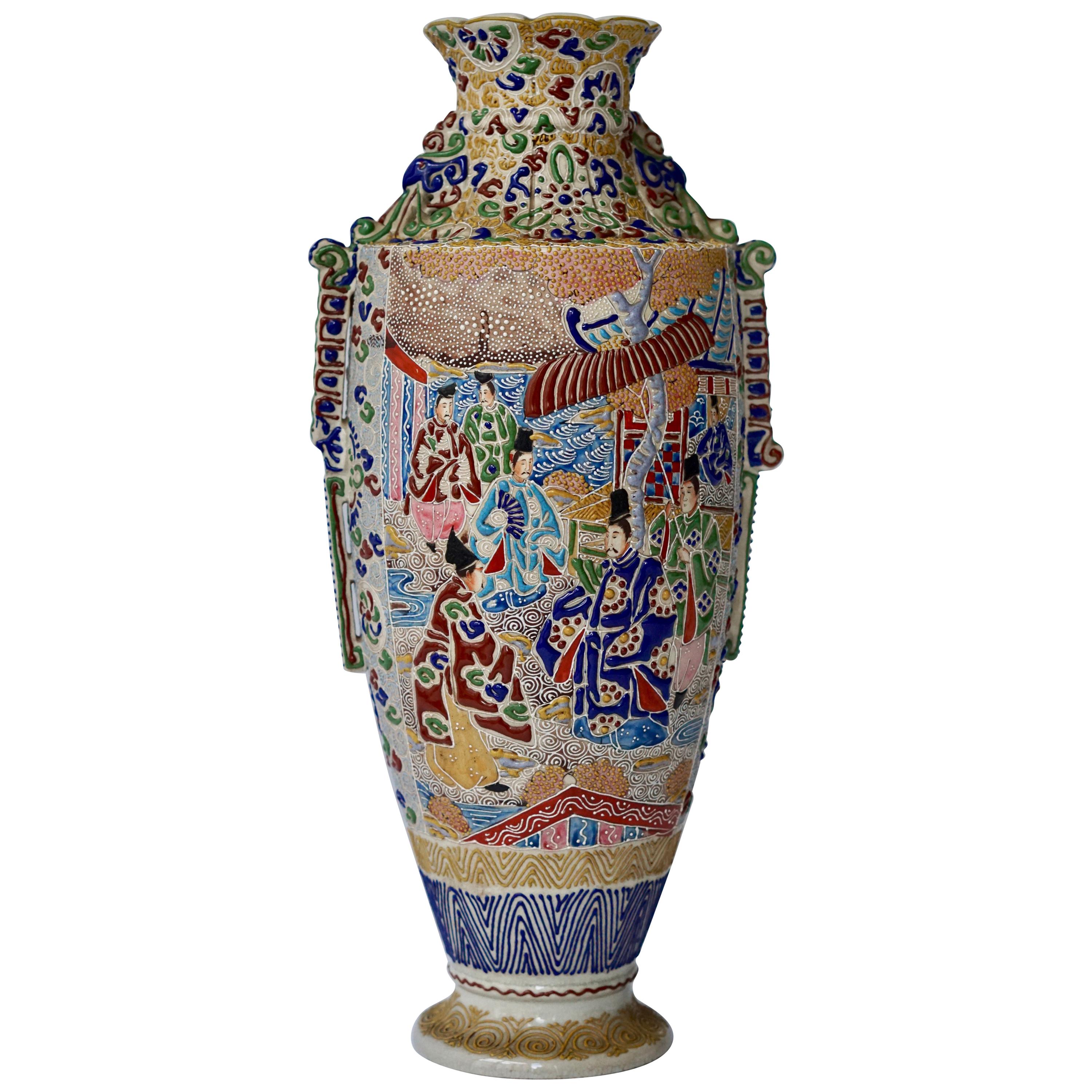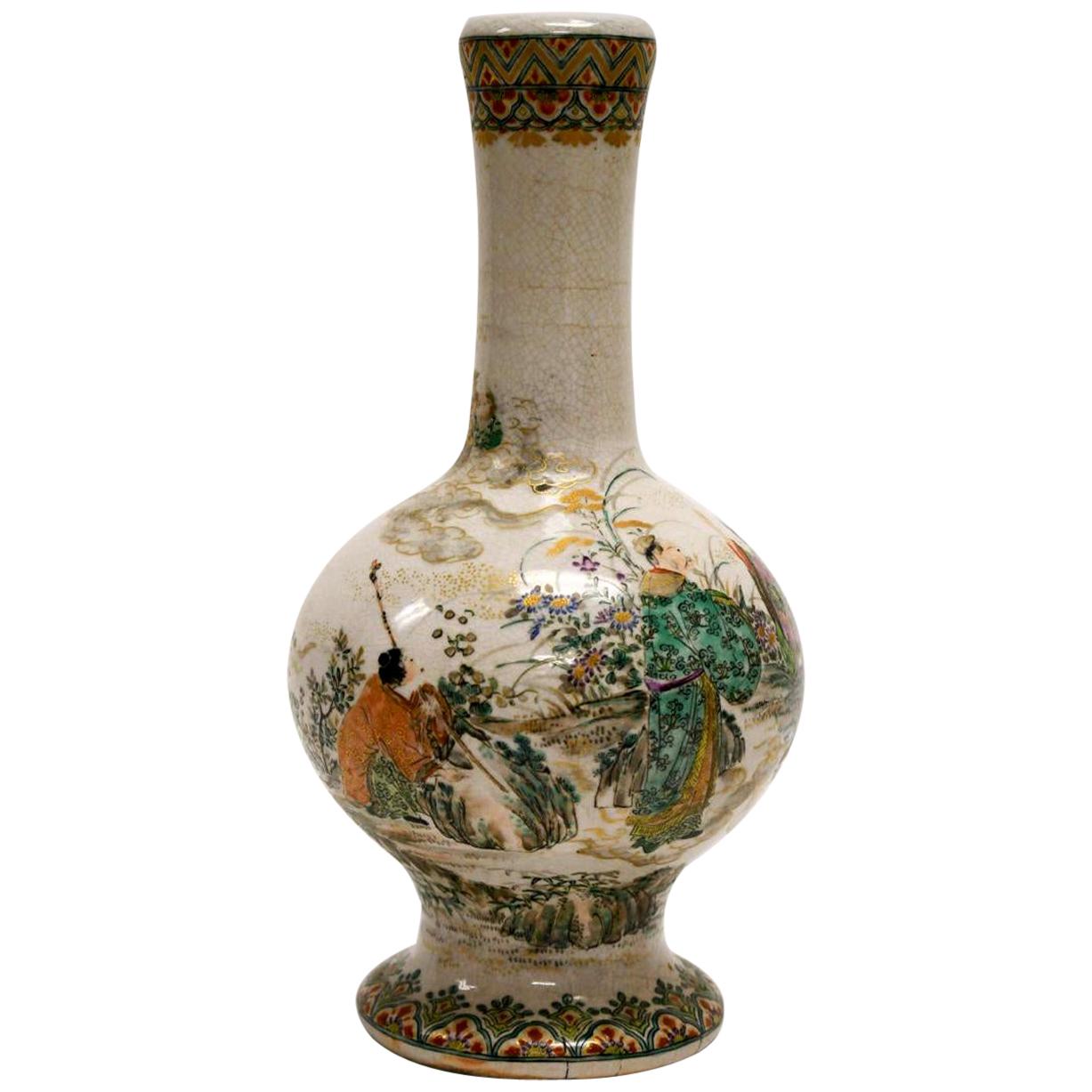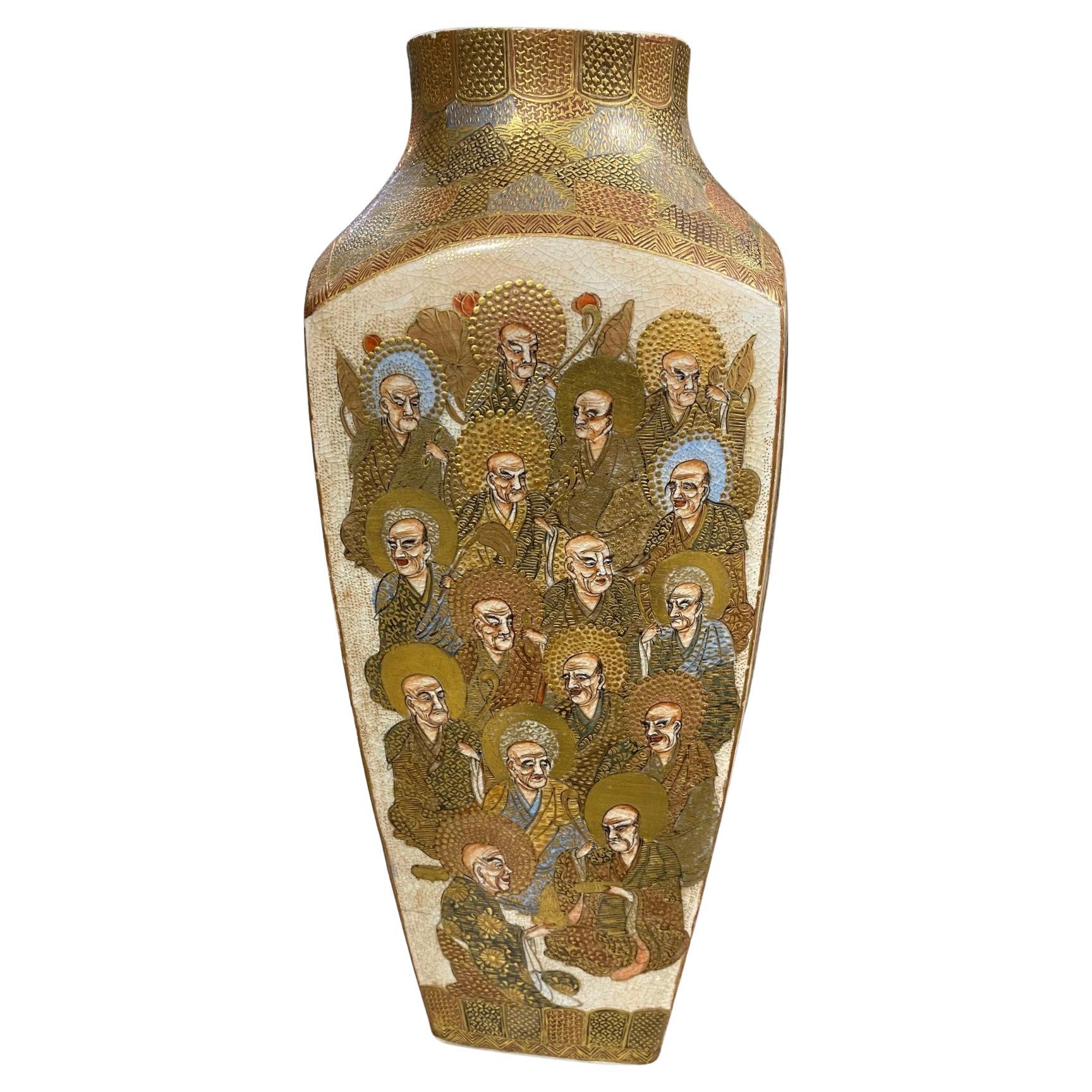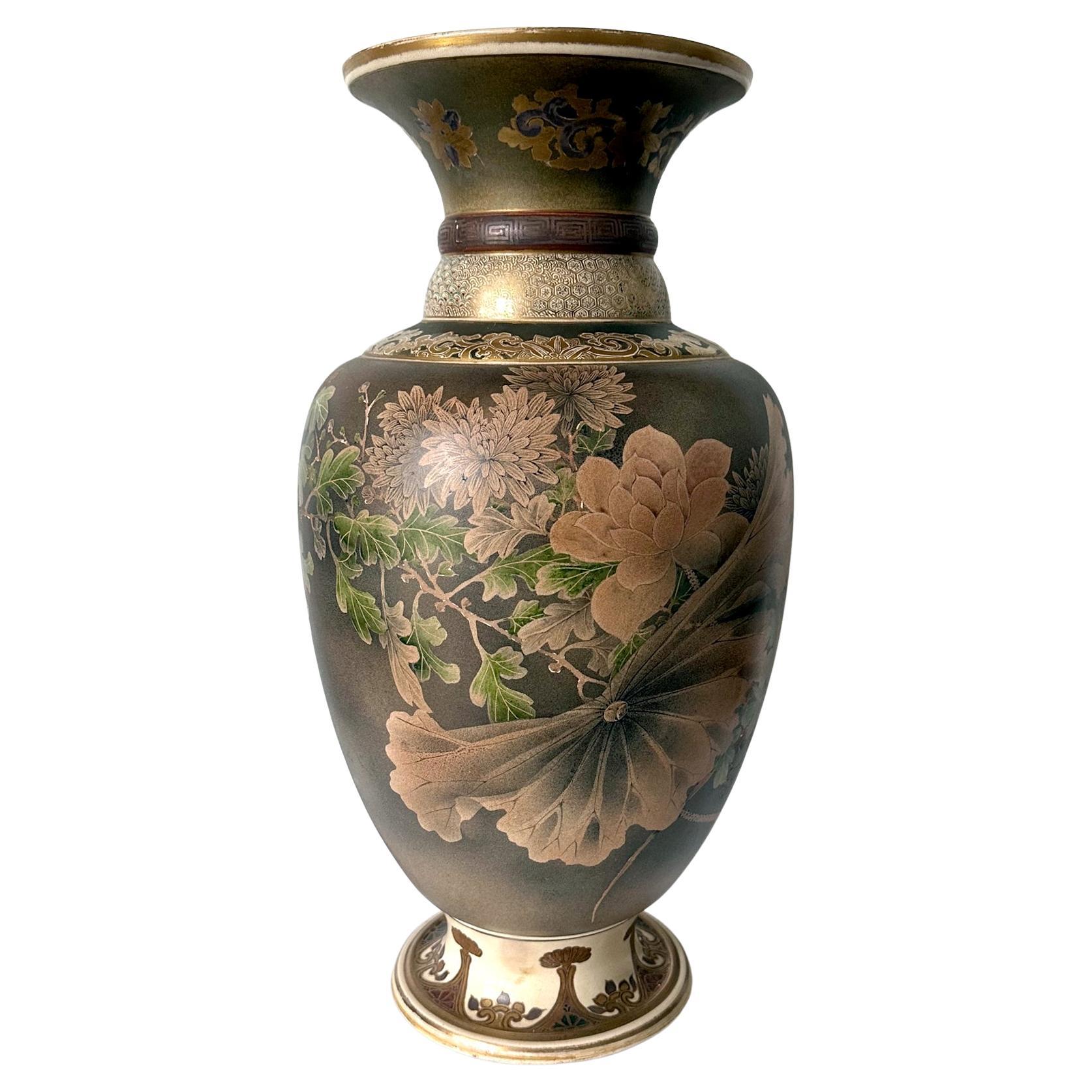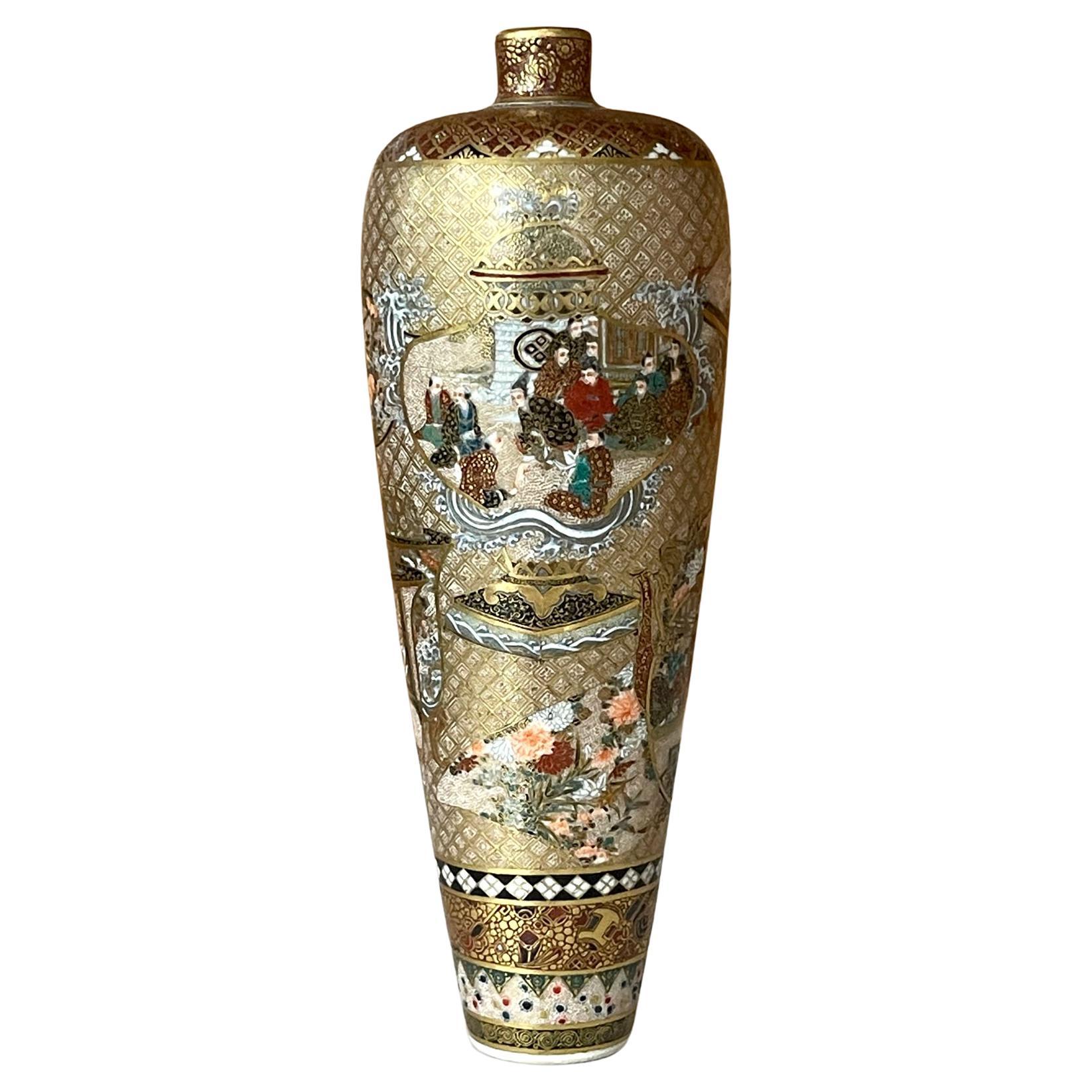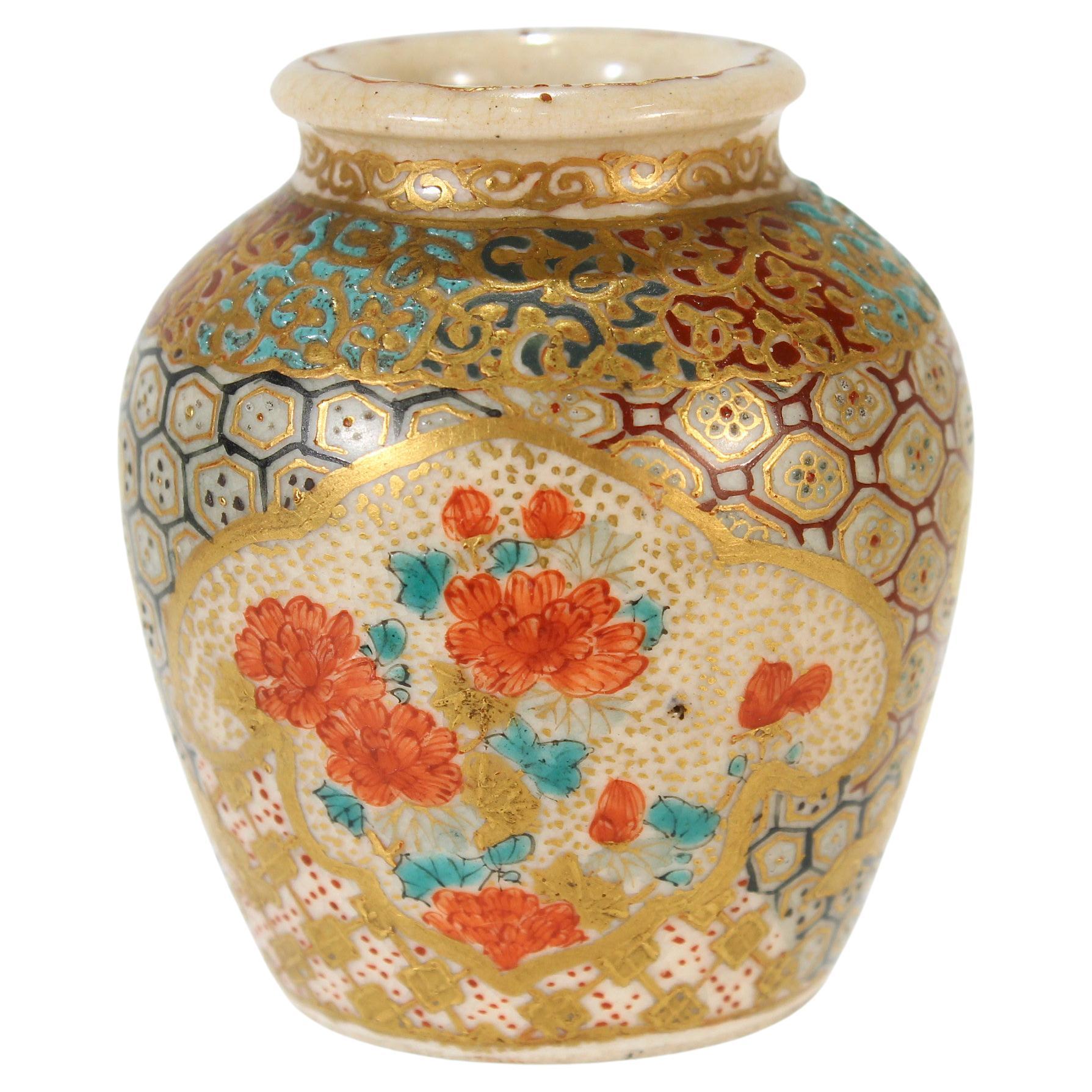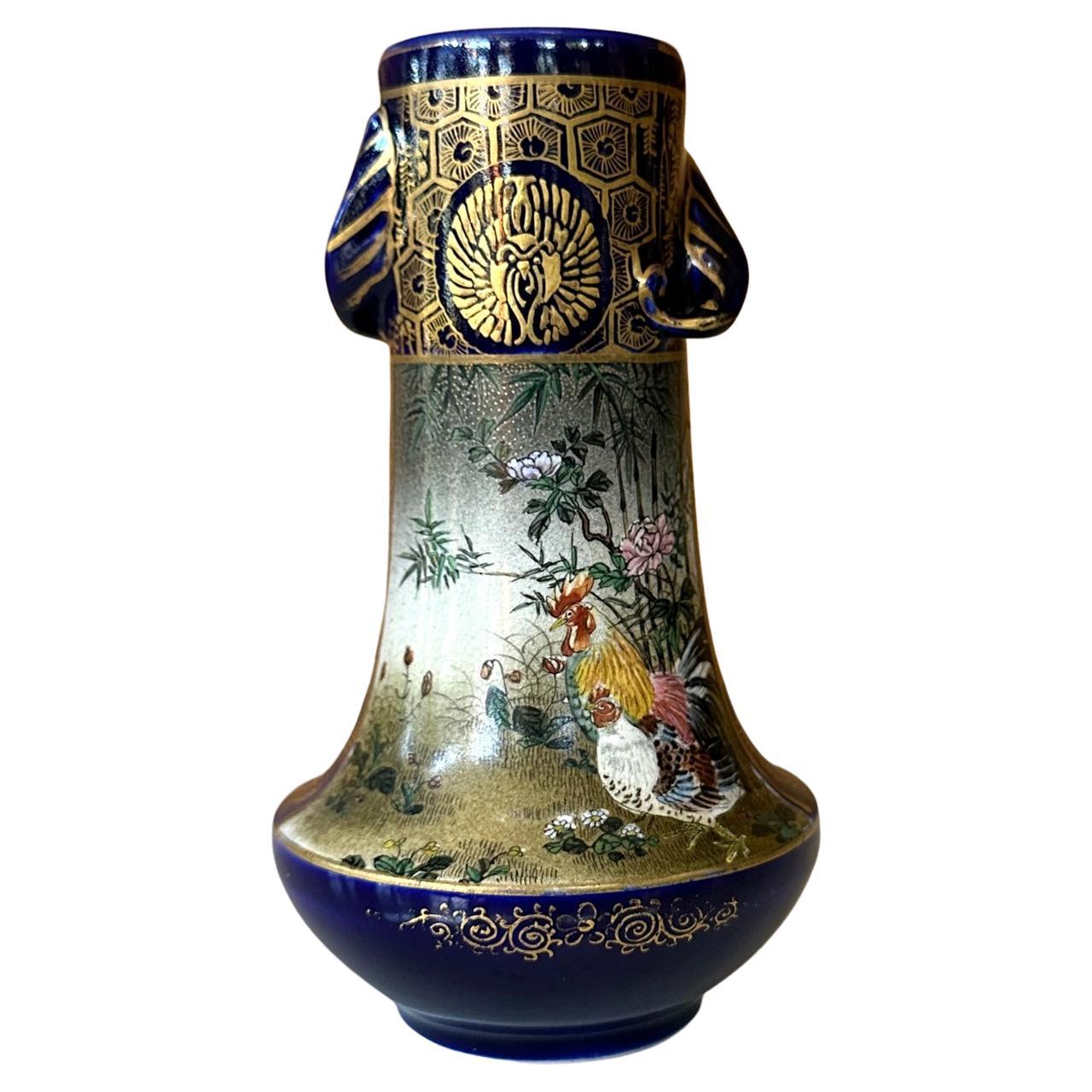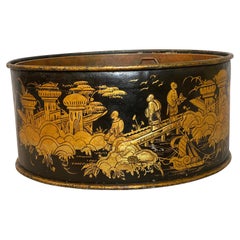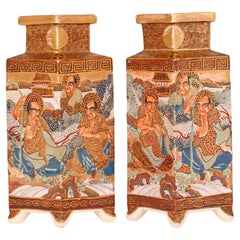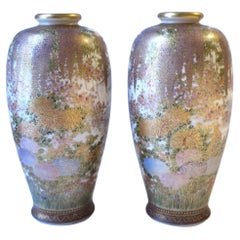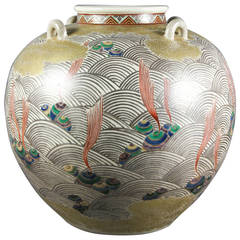
Japanese Satsuma Pottery Vase
View Similar Items
Want more images or videos?
Request additional images or videos from the seller
1 of 8
Japanese Satsuma Pottery Vase
About the Item
- Dimensions:Height: 10.5 in (26.67 cm)Diameter: 10 in (25.4 cm)
- Place of Origin:
- Period:
- Date of Manufacture:1880
- Condition:Wear consistent with age and use.
- Seller Location:Essex, MA
- Reference Number:1stDibs: LU83812946972
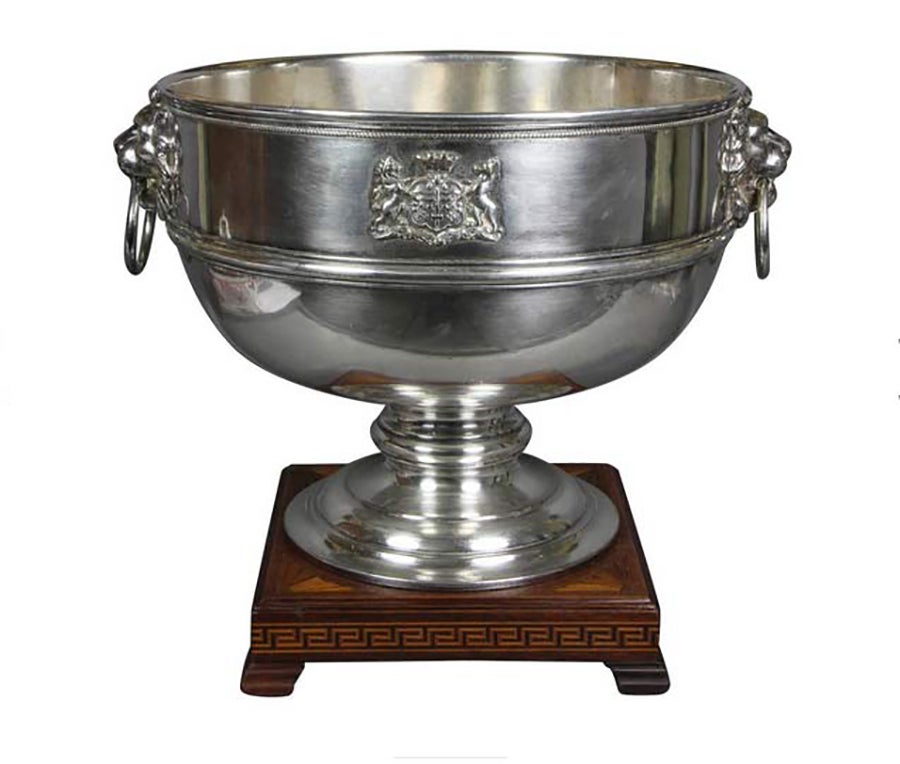
About the Seller
4.9
Gold Seller
These expertly vetted sellers are highly rated and consistently exceed customer expectations.
Established in 1985
1stDibs seller since 2007
815 sales on 1stDibs
Typical response time: 2 hours
Associations
The Art and Antique Dealers League of America
More From This SellerView All
- Regency Japanned Toleware JardiniereLocated in Essex, MACircular with copper liner. Finely and beautifully decorated with Asian inspired gilded pavilions and landscapes in subtle colors and fine patina.Category
Antique 1820s English Regency Planters, Cachepots and Jardinières
MaterialsTin
- Pair of Chinese Porcelain ChickensLocated in Essex, MADecorated with green and yellow enamels. Standing on a blue rock work base.Category
Antique Late 19th Century Chinese Ceramics
MaterialsPorcelain
$725 / set - Pair of Chinese Porcelain Foo DogsLocated in Essex, MAEach seated on pedestals one stepping on a ball the other clutching a reptilian creature. Painted in the spinach and egg color.Category
Antique 1880s Chinese Ceramics
MaterialsOther
$1,800 / set - Pair Of Chinese Famille Rose Hexagonal Table LampsLocated in Essex, MAUnusual hexagonal form with overall painted decoration.The base with pierced decoration. Now mounted as lamps.Category
Antique 1860s Chinese Ceramics
MaterialsPorcelain
- Chinese Export Famille Rose Porcelain Sauce Tureen And UnderplateLocated in Essex, MAOval with cover and under tray. Detailed painting with a C monogram.Category
Antique 1850s Chinese Chinese Export Ceramics
MaterialsPorcelain
- Pair of European Porcelain Figures of Chinese Guardian LionsLocated in Essex, MABrightly painted with a male and female foo dog or Buddhistic lion one holding a ball for the material world and the female with the cub representing the spiritual.Category
Antique Late 19th Century European Ceramics
MaterialsPorcelain
You May Also Like
- Satsuma Japanese Meiji Pair Diamond Shaped Pottery VasesBy SatsumaLocated in Bishop's Stortford, HertfordshireA good and unusual pair antique Japanese Satsuma Meiji diamond shaped pottery vases decorated with monk figures with a scrolling dragon dating from the 1...Category
Antique 19th Century Japanese Meiji Ceramics
MaterialsPottery
- Japanese Satsuma Vases, PairBy SatsumaLocated in New York, NYA gorgeous pair of Japanese earthenware Satsuma vases, hand-painted, Meiji period, circa early-20th century, Japan. Vases' beautiful decoration is high-qu...Category
Early 20th Century Japanese Meiji Ceramics
MaterialsEarthenware
$2,850 / set - Japanese Satsuma Vase with FiguresLocated in Antwerp, BEA mid-20th century Japanese Satsuma vase with figures. Satsuma ware is a style of Japanese earthenware originally from the Satsuma region of what is today southern Kyushu. There are two distinct categories of this ware: The original plain dark clay early Satsuma...Category
Mid-20th Century Japanese Japonisme Vases
MaterialsCeramic
- Early Japanese Satsuma Antique VaseBy SatsumaLocated in Atlanta, GAAn Satsuma ceramic stone ware vase, circa 19th century, around the end of the Edo and the beginning of Meiji period. In the form of a Classic garlic bottle whose prototype was from China, the white bodied piece is decorated with an early form of kin nishikide, the so called golden brocade, a palette of iron-red, blue, green, yellow, purple and black with golden highlight. The over glazed enamel paint shows a group of robed figures in a garden setting with a lion and three tigers. A transparent overall glaze shows very fine crackles. The design is relatively sparse with plenty of negative space in contrast to the Satsuma production from the late 19th century, when the trend became fussy and overly glitz, due to the influence by the perceived western taste for the export market. This piece may still be made for export but its pattern was more influenced by both Kyoto Pottery and the Kano school of painting compared to the export ware by the end of the 19th century onward to the early 20th century. It was believed by many that this was a result of Satsuma potters visiting Kyoto in the late seventeenth century to learn over glaze painting techniques. There are some age glaze crackles especially around the foot. The piece is not signed in keeping with the earlier production before Satsuma ceramics...Category
Antique Mid-19th Century Japanese Japonisme Ceramics
MaterialsCeramic
$2,850 Sale Price25% Off - Japanese Antique Satsuma Pottery Buddhist Monks Vase with Shimazu Crest MarkBy SatsumaLocated in Studio City, CAA beautiful Japanese Satsuma pottery studio vase featuring multiple kesa-clad enlightened Buddhist monks on each side of the vase. The piece is finely detailed with rich raised gilt highlights throughout and beautifully decorated in gold and various hand painted other colors. From the Meiji period (1868-1912). This piece has the all-important Shimazu Family crest mark (red circle with a cross inside) on the base authenticating the work as an old and original Satsumaware work. The mark shows the pottery was made under the rule of the Shimazu clan. From a Los Angeles Collection...Category
Early 20th Century Japanese Meiji Ceramics
MaterialsEarthenware, Pottery
- Large Japanese Satsuma Ceramic Vase KinkozanBy KinkozanLocated in Atlanta, GAA large Japanese ceramic vase from the end of Meiji period circa 1890-1910s by Kinkozan (1645-1927). One of the largest studio manufacturers of the export ceramics at the time based in Kyoto. In the typical style of satsuma made at the turn of 20th century, the vase is elaborately decorated with a rather unusual kinran-de (gold paint) and green enamel highlight on a mottled brown background. The painterly decoration depicts a large seasonal floral arrangement in a circular fashion. Besides the obviously superb craftsmanship, what sets this particular vase apart from many lower quality and mass-produced pieces is its tone-on-tone color pallet that is visually somber and the small and sensitive details that heralds the change of the seasons. When the viewer goes beyond the first casual glimpse of the blossom and foliage, one would notice that on the edges of certain leaves as well as along the stalks, there accumulates a very thin layer of the white dust that represents the frost. The flower in bloom are chrysanthemums. Despite of being splendid, they are the messengers of the autumn. The large lotus leaf was subtly rendered in a bended and slightly withered manner, just past its prime. Although the lotus is still in bloom, the prominent seed pod indicates it may be the last for the season. The sentimental capture of the change of the seasons is not unusual in Japanese art. This vase poetically represents such a subtle transition from summer to fall, perhaps depicting the very first frost. The neck of the vase is also slightly unusual with two rolled rings...Category
Early 20th Century Japanese Meiji Ceramics
MaterialsCeramic
Recently Viewed
View AllMore Ways To Browse
Satsuma Gold
Satsuma Pottery
Japanese Satsuma Pottery
19th Century Asian Satsuma Vases
Antique Satsuma Pottery
Antique Japanese Satsuma Pottery
Satsuma Gold Vase
Mandarin Furniture
Chinese Export Green
Qing Blue And White
Qing Blue White
Japanese Gold Imari
Dynasty Ceramic
Hand Painted Chinese Stand
Korean Antique Furniture
Gold Imari Japan
Brown And White Antique China
Antique Japanese Figures

